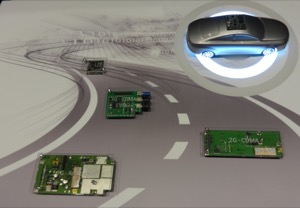
Continental’s 5G roadmap.
When fully autonomous vehicles arrive depends on where you want to be driven. If there’s a low latency, high speed mobile network available – likely, a 5G network – then you’ll be able to take a nap in the back seat. If connectivity isn’t there or isn’t up to the necessary standard, then you’ll have to sit behind the wheel and be ready to take control on short notice.
That’s my takeaway from a briefing at CES yesterday by Continental, an automotive technology company. Among other things, it makes data processing and communications systems for major carmakers. One of the challenges to get to the point where machines can be given full responsibility for driving people safely and efficiently is delivering sufficient information to them quickly enough.
On board sensors are the primary source of data. But they’re also the last line of defence. Their range is limited to somewhere between 100 meters and 300 meters – call it something like a city block. Any additional information will have to be gathered via wireless communications. And there’s a lot of it: weather, traffic signals, position and intent of other vehicles and more. With all of that information available quickly enough, cars can drive themselves, Continental believes.
The big hurdle is network latency. Continental reps said that current 4G networks typically have 100 milliseconds of latency, which is too much of a lag for safety related information. Experiments on 4G systems in Germany have brought that down to 20 milliseconds, which is fast enough, but as a practical matter it’ll take a general upgrade to 5G standards – whatever those turn out to be – to get that kind of performance on a generally available, commercial basis.
The timeline for 5G deployment and the development of cars that capable of fully autonomous operation under a given set of conditions is about the same: the middle of the next decade. As the technology develops, those conditions will encompass more and more places. But the ultimate limit will be mobile network availability and performance.
